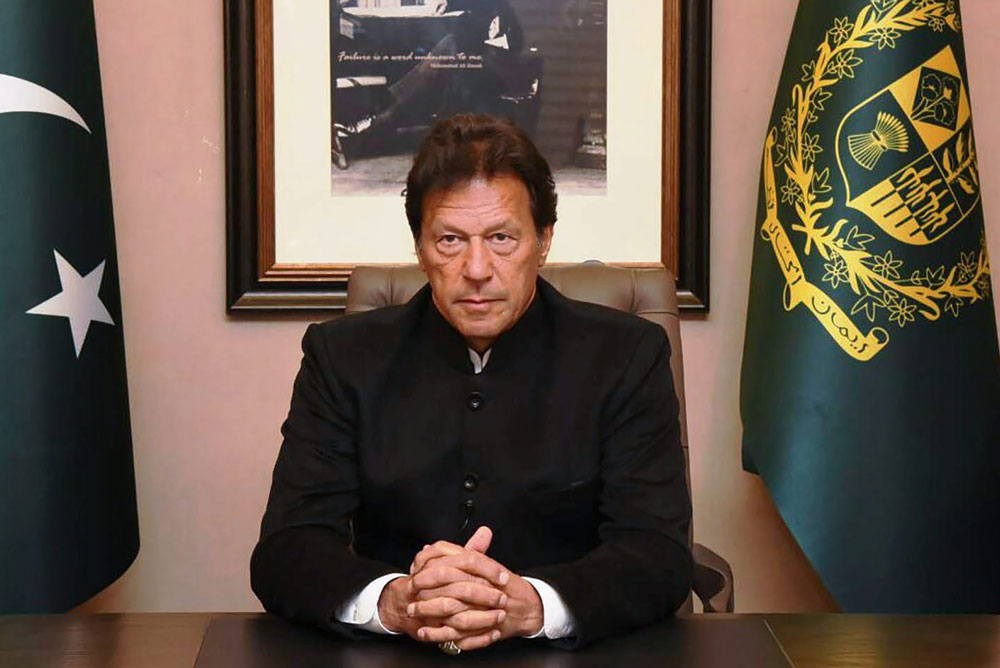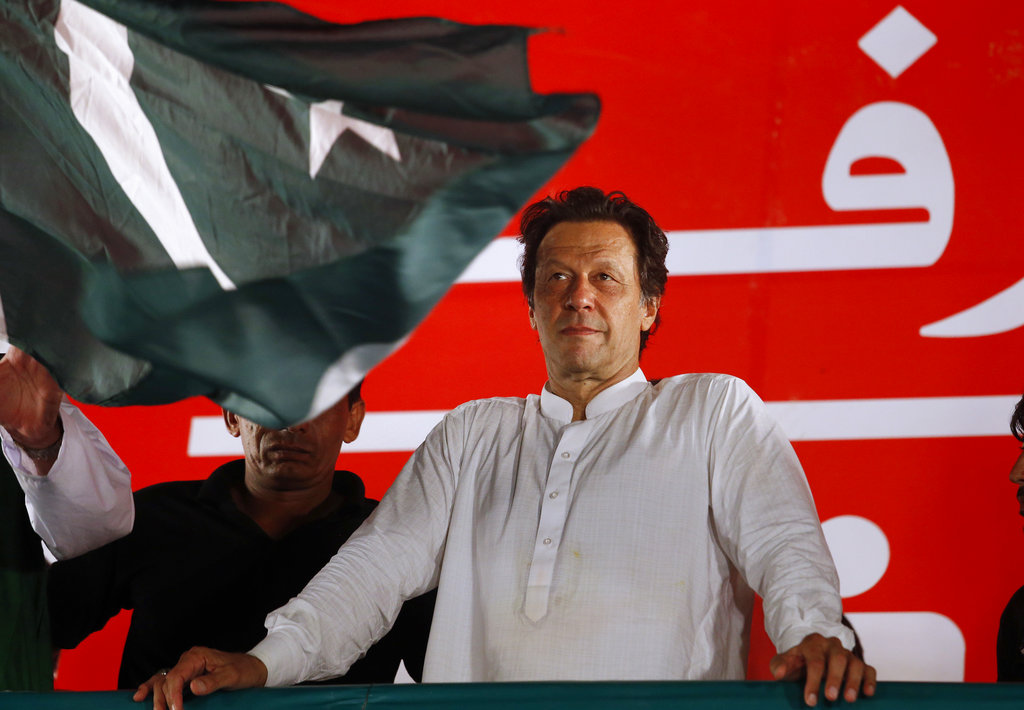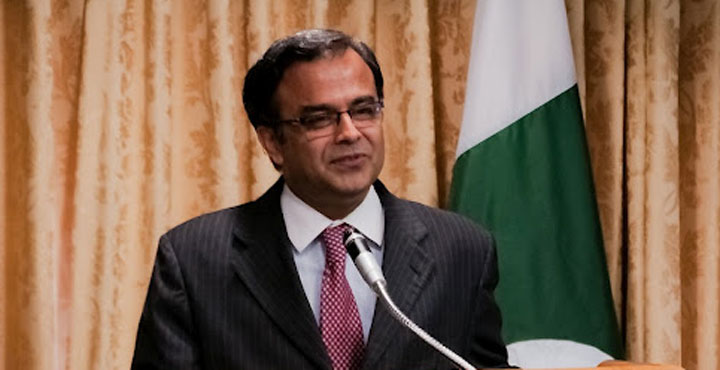What was palpable in many quarters in Pakistan as the visit of Pakistan’s prime minister, Imran Khan, to the United States of America last month drew to a close was a sense of relief, almost as if a hidden hand had turned a switch. This was not so much because of the now famous Kashmir mediation remarks of the US president, Donald Trump, nor any great expectation of significant US financial assistance, nor even indeed of any immediate gains in Afghanistan. The relief came from the assessment that a particular and significant downturn in US relations with Pakistan may now be ending.
There are different views in Pakistan on the beginning and the duration of the downturn and of its most significant troughs. Was the lowest point reached sometime back — the raid in Abbottabad that killed Osama Bin Laden in 2011? Or was the real low point on account of a political landscape change in the US with the election of Trump in 2017? A year into his presidency, and in his first tweet of 2018, Trump had expressed the accumulated frustrations of his and also earlier administrations, accusing Pakistan of “lies and deceit” and of thinking that US leaders were “fools” for giving billions in aid while Pakistan gave “safe haven to terrorists”. This was harsh but in substance not much different from statements and hints that had been coming out of the US on Pakistan for at least the past decade. There were, however, two important differences. First, this was the US president himself speaking, or rather, tweeting. Second, this blunt talk on Pakistan was accompanied by the statement that the US’s new policy would be “to further develop its strategic partnership with India”. To many in Pakistan it appeared, therefore, with some merit, that there was a new intensity and quality to the US pressure on Pakistan and that it had a new dimension in terms of a willingness to employ that pressure in concert with India.
Imran Khan’s July visit and meeting with Trump suggested to many in Pakistan and their supporters elsewhere that light was now visible at the end of the tunnel. The downturn in relations with the US was ending. Certainly, there is recognition that US eagerness to end the longest military engagement of its history as quickly as possible is the principal driver here and not any new US assessment of Pakistan itself. Yet alongside there is also a palpable sense of satisfaction, almost a sense of triumphalism, that Pakistan has managed its way through a particularly difficult phase of its relations with the US.
This sense of triumphalism in Pakistan is not new in itself. In its recent history many crests and troughs in its foreign policy have been tied to Afghanistan. It is almost as if the two countries have been tied together in a kind of dialectical dance since the time Afghanistan was the sole objector in 1947 to Pakistan’s application to become a member of the United Nations.
In April 1979, the execution of Zulfikar Ali Bhutto had appeared to signal the beginning of a long downturn in US-Pakistan relations. Within days of the event the US had imposed financial sanctions. The actual reason was Pakistan’s nuclear weapons programme but the coincidence with the execution clouded perceptions about causes both in Pakistan and outside. In any event, worse was to follow. In November 1979, the US embassy in Islamabad became the site of a siege led by students affiliated to the Jamaat-e-Islami. Anti-American sentiment in Pakistan was high over the sanctions. The embassy siege also happened a day after Islamic militants had holed themselves inside the Grand Mosque at Mecca in Saudi Arabia. The students in Islamabad were also emboldened by the continuing hostage situation in the US embassy in Tehran. The Islamabad siege ended quickly, although not before a US marine was killed. For its failure to protect the diplomatic mission as required under international law Pakistan agreed to pay compensation of about $20 million. The US-Pakistan relationship thereafter appeared poised to head deep south.
The Soviet invasion of Afghanistan the following month, however, transformed the politics of South Asia radically and a US-Pakistan concert emerged with the latter now a front line state for US interests. Amidst these larger geopolitical compulsions, the older frictions appeared somewhat minor. The then US national security advisor, Zbigniew Brzezinski, thus minuted to the then president, Jimmy Carter, “... alas... our security policy toward Pakistan cannot [now] be dictated by our non-proliferation policy”. The public manifestation of this changing balance between Pakistan and the US was in General Zia-ul-Haq describing a financial and military assistance offer from Carter as “peanuts”.
If the Soviet invasion was an obvious opportunity for Pakistan to demonstrate its relevance to the US, it also appeared as a real threat. The fears of a second India-Soviet combine, as had dismembered Pakistan at the beginning of the decade, were never far below the surface. The former Soviet Union’s final withdrawal a decade later and the end of the Cold War in Europe with the coming down of the Berlin Wall thus naturally appeared to Pakistan as a vindication on many fronts. The sense of triumphalism this generated and fostered in Pakistan is best captured by a memento in Pakistan at the Khyber Pass on the Afghanistan-Pakistan border. The memento was a gift from a visiting army chief from Germany. It is a small piece of rubble from the Berlin Wall mounted on a plaque that reads, “To the Officers and Troops of the Pakistan Army — For striking the first blow”.
Afghanistan has been, in brief, the platform for swift changes in Pakistan’s foreign policy fortunes for half a century now. Yet such changes in fortune caused by changing great power interests carry numerous downsides. Post-Soviet Afghanistan saw an expansion of Pakistan’s influence in Afghanistan — reaching its peak during the years of Taliban rule. However, the civil war that engulfed Afghanistan from the early 1990s, and in which Pakistan participated with such energy, burnt Pakistan, some feel, almost beyond recognition.
Where does the current phase of US policy leave Pakistan? In 1979, the US felt all roads to give the Soviet Union its Vietnam lay through Islamabad. Today, in the judgment of the US, the road out of Afghanistan is through Pakistan. In the intervening four decades the US engaged, disengaged, engaged again and is now on the threshold of another disengagement from the Afghanistan-Pakistan imbroglio. For Pakistan, at each such transition, the emergent tactical advantages were so obvious that any calculation of long-term collateral seemed superfluous. In hindsight it is perhaps clearer that through the crests and troughs of engagement with Afghanistan for the past four decades, Pakistan has been, in any objective cost benefit analysis, the loser. Therefore, whether a reasonably successful Imran Khan-Trump summit represents light at the end of a tunnel or a locomotive hurtling at top speed towards it is for Pakistanis themselves to decipher.
The author is a retired diplomat and currently Director General of the Indian Council of World Affairs












